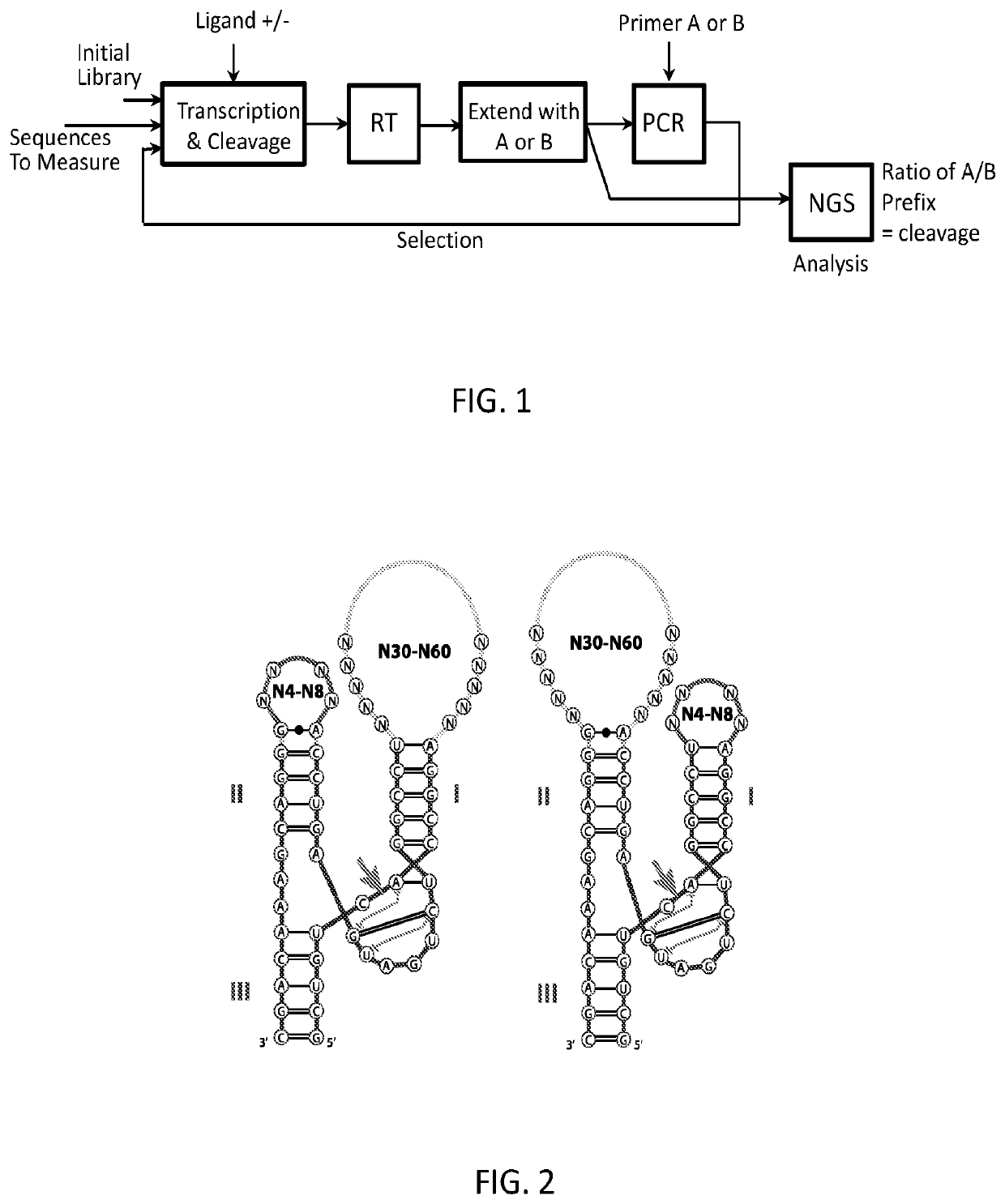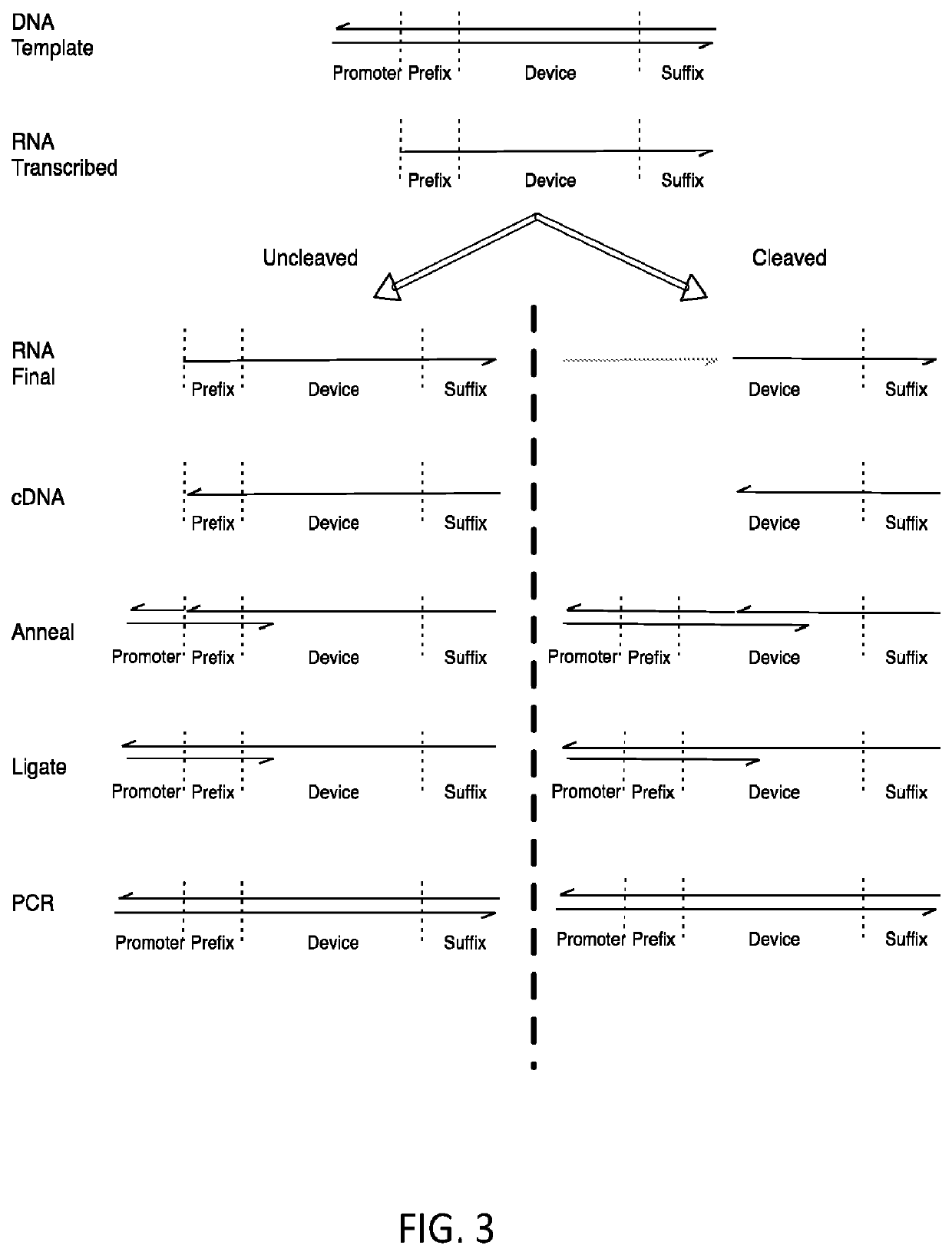Molecular sensor selection
a sensor and molecular technology, applied in the field of molecular sensor selection, can solve the problems of limited target molecule that can be used, inability to find any aptamers that bind to the modified target, and difficult implementation, and achieve the effect of adequate diversity and low volum
- Summary
- Abstract
- Description
- Claims
- Application Information
AI Technical Summary
Benefits of technology
Problems solved by technology
Method used
Image
Examples
Embodiment Construction
[0036]As noted above, a method for selecting a ligand-responsive ribozyme is provided. In certain embodiments, the method may comprise: (a) in vitro transcribing a DNA library to produce RNA; (b) reverse transcribing the RNA to cDNA; (c) selectively amplifying the cDNA such that cDNA molecules corresponding to RNA molecules that have been cleaved are amplified by a different amount relative to cDNA molecules corresponding to uncleaved RNA; (d) preparing the amplified cDNA of (c) for in vitro transcription; (e) repeating steps (a)-(d) one or more times; and, (f) determining the sequence of one or more of the molecules in the product of step (e).
[0037]Step (a) of the method can be done in the presence or absence of a target molecule (a prospective ligand). As such, the repeats of steps (a)-(d) may alternate between repeats in which step (a) is done in the presence of the target molecule and repeats in which step (a) is done in the absence of the target molecule, thereby allowing one t...
PUM
| Property | Measurement | Unit |
|---|---|---|
| molecular weight | aaaaa | aaaaa |
| molecular weight | aaaaa | aaaaa |
| molecular weight | aaaaa | aaaaa |
Abstract
Description
Claims
Application Information
 Login to View More
Login to View More - R&D
- Intellectual Property
- Life Sciences
- Materials
- Tech Scout
- Unparalleled Data Quality
- Higher Quality Content
- 60% Fewer Hallucinations
Browse by: Latest US Patents, China's latest patents, Technical Efficacy Thesaurus, Application Domain, Technology Topic, Popular Technical Reports.
© 2025 PatSnap. All rights reserved.Legal|Privacy policy|Modern Slavery Act Transparency Statement|Sitemap|About US| Contact US: help@patsnap.com



